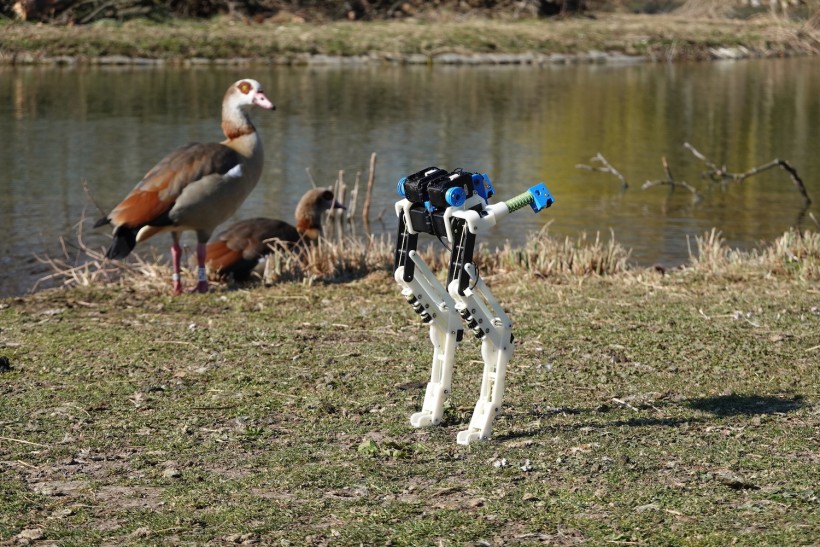Scholars from the Max Planck Insitute for Intelligent Systems (MPI-IS) recently developed a robotic innovation that can run faster than modern-day machines.
The robot leg can move with a speed that surpasses the machines built with limbs for running. The machine, also called 'BirdBot,' has an architecture inspired by the natural physiology of the legs in flightless birds such as emu and ostrich.
Speed of Flightless Birds

Together with his doctoral student Alborz Aghamaleki Sarvestani, Badri-Spröwitz has constructed a robot leg that is energy-efficient like its natural model: BirdBot needs fewer motors than other machines and could, theoretically, scale to a large size. On March 16th, Badri-Spröwitz, Aghamaleki Sarvestani, the roboticist Metin Sitti, a director at MPI-IS, and biology professor Monica A. Daley of the University of California, Irvine published their research in the renowned journal Science Robotics.
The BirdBot was assembled with lesser motors than other robotic units available today. Moreover, its design can be configured to a larger scale.
The BirdBot development was led by MPI-IS Dynamic Locomotion Group expert Alexander Badri-Sprowitz, who studies and constructs models joining the aspects of robotics and biology. The BirdBot team includes fellow Max Planck expert Alborz Aghamaleki Sarvestani, MPI-IS director and robot specialist Metin Sitti, and University of California biologist Monica Daley.
Most birds carry out their fast movements through the formation of their limbs. Some of them fold their feet and legs backward to exert maximum power that would push them ahead, seemingly swinging their bodies forward.
Badri-Sprowwitz explained that the bird-like ability they relayed into the machine uses not just electrical impulses, nervous systems, or muscle activity. In the study, the team utilized a mechanical coupling between the multiple joints, tendons, and muscles of a system.
Through the coordination between these factors, the foot folding that birds perform can be carried out by a robot, enabling the unit to walk or run fast while keeping its energy consumption at lower rates.
The energy-efficient approach makes the BirdBot efficient even when performing at its peak. The mechanism selected for the robot was theorized to be the same as what the birds do for their natural systems.
ALSO READ: Boston Dynamics Robotic Guard Dog 'Spot' Hired to Protect Pompeii Archaeological Site
Fastest Robot Leg 'BirdBot'
The team tested the capacity hidden in avians by constructing a robot similar to the leg of flightless birds. The design of the limbs was close to that of emus and ostrich, which are commonly known to lack the ability to elevate across the skies.
The mechanical technology installed on the BirdBot was not complicated. Simple processes were selected for the legs, including joints, cabling, pulleys, and spring mechanisms.
The initial tests of the BirdBot were carried out through a treadmill to get an accurate measurement of the robot's limits. Alongside its speed, the BirdBot was also observed with its foot and leg movements, from which the experts saw similarities with the limb performance of a real bird, Unite AI reports.
The BirdBot uses just a little energy, making it among the few efficient machines ever presented in recent years. The association of each robot's properties makes it coordinate its movements without exerting much effort and wasting too much energy.
According to a report by NewScientist, the BirdBot could achieve efficiency by up to 300 percent compared to when the same unit uses a traditional motor.
The study was published in Science Robotics, titled "BirdBot achieves energy-efficient gait with minimal control using avian-inspired leg clutching."
RELATED ARTICLE: Over 4,000 Disinfection Robots Set for Sell or Rent This Year, Here's How It Works
Check out more news and information on Robotics in Science Times.




![Earth's Quasi-Moon Kamo‘oalewa Could Originate From Lunar Surface Not Asteroid Belt [Study]](https://1721181113.rsc.cdn77.org/data/thumbs/full/53275/89/56/50/40/earths-quasi-moon-kamo-oalewa-could-originate-from-lunar-surface-not-asteroid-belt-study.png)









